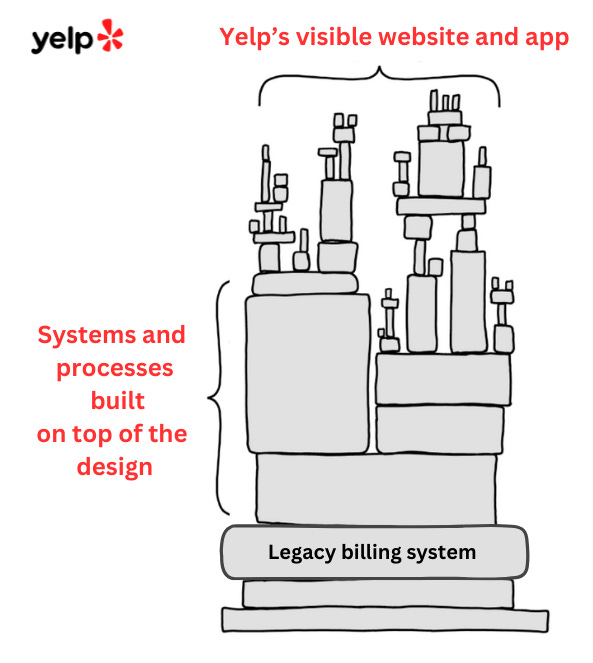How Yelp Automated 90% of its Revenue Recognition
Learn more about how Yelp pulled of a multi-year project impacting millions of users
TL;DR
Situation
Yelp's decade-old billing system no longer met industry standards. It caused errors in handling invoices and payments. This hurt its ability to use third-party financial tools. It also hurt its revenue reporting accuracy.
Task
Yelp needed to modernize its billing system. It had to align with standard practices, fix legacy issues, and enable growth. It also had to avoid disrupting operations.
Action
The team took the following actions:
Gather Requirements – Use Domain-Driven Design to align stakeholders with their goals.
Define Target Architecture – Design a custom billing solution inspired by industry standards.
Project Planning – Establish cross-functional "Tiger Teams" to handle interdependent workstreams.
Deliver Incrementally – Roll out changes to small customer groups. This will ensure correctness before wider deployment.
Single A/B Rollout - Roll out features to one user group in stages. This will simplify metrics measurement.
User Acceptance Testing (UAT) – Verify the system's correctness. Conduct thorough UAT with stakeholders of affected teams using detailed test plans.
System Observability – Use a multi-layered observability approach with alerts and integrity checkers.
Result
Yelp completed an overhaul of its billing system, ensuring alignment with industry standards. This improved revenue accuracy and automated 90% of it by strengthening the data.
Use Cases
Accurate Billing Management, Automated Financial Reporting, Third-Party Integration
Tech Stack/Framework
Domain-Driven Design
Explained Further
Understanding the Legacy Challenge
Keep reading with a 7-day free trial
Subscribe to Data Tinkerer to keep reading this post and get 7 days of free access to the full post archives.


